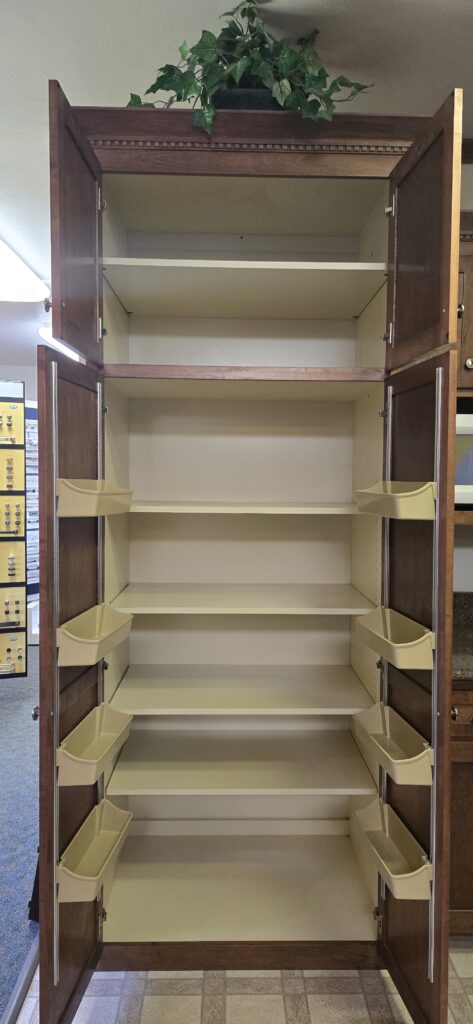
Designing your new kitchen can be an exhilarating endeavor, a chance to sculpt a space that truly reflects your lifestyle and needs. Amidst the gleaming appliances and carefully chosen counter-tops, the humble pantry often plays a silent but crucial role. Getting its size just right – not too cavernous, not too cramped – is key to a functional and enjoyable kitchen experience.
The first step in this planning process is a thorough assessment of your current and anticipated needs. Take a good, hard look at your existing kitchen storage. What are the pain points? Are your shelves overflowing? Do you find yourself constantly shifting items to reach what you need? Consider the size of your household and your cooking habits. Do you primarily cook from scratch, requiring ample space for dry goods, canned items, and baking supplies? Or do you rely more on pre-packaged foods? Think about your grocery shopping frequency. Do you make large, infrequent trips, necessitating more storage, or smaller, more regular ones? Don’t forget to factor in any bulk purchases you might make, like paper towels or Costco-sized snacks. This honest evaluation will provide a baseline for determining the volume of storage you truly require.
Beyond your immediate needs, it’s wise to anticipate future changes. Will your family size grow? Do you foresee adopting new cooking styles or hobbies that might require specialized storage? While overbuilding can waste valuable kitchen real estate, a little foresight can prevent future storage woes. Consider adding a buffer to your estimated needs – perhaps an extra shelf or a slightly deeper cabinet. This allows for flexibility and growth without immediately overwhelming the space.
The available kitchen footprint is another critical factor. Kitchen sizes can vary greatly depending on the style and age of the home. Be realistic about the space you can allocate to a pantry without compromising workflow and the overall aesthetics of your kitchen. A sprawling walk-in pantry might be a dream, but if it makes your cooking area feel cramped and disconnected, it’s not the right solution. Consider different pantry configurations – a tall, narrow pantry with adjustable shelving, a series of deep cabinets with roll-out shelves, or even a well-designed reach-in closet. Each option offers different storage capacities and spatial demands.
Accessibility and organization should heavily influence your size considerations. A large, deep pantry can quickly become a black hole if items are difficult to reach and categorize. Consider incorporating features like our adjustable shelving, roll-outs, drawers, and door-mounted racks to maximize usable space and ensure that everything is visible and within easy reach. Planning for adequate lighting within the pantry is also crucial, especially for deeper units. A well-organized smaller pantry can often be more efficient than a larger, cluttered one.
Finally, aesthetic integration with the overall kitchen design is important. The pantry, regardless of its size, should feel like a cohesive part of the kitchen. Consider the style of cabinetry, hardware, and even the interior finishes of the pantry to ensure it complements the rest of the space. A thoughtfully designed pantry, even a smaller one, can enhance the overall visual appeal of your new kitchen.
By thoughtfully analyzing these factors, you can move beyond simply aiming for “big” and instead strive for a pantry that is perfectly proportioned to support your culinary adventures and contribute to a harmonious and efficient kitchen environment. The goal isn’t just storage; it’s about creating a space that simplifies your life and brings joy to your daily routines.
Besides…who doesn’t want a Pantry they can be proud of…?
